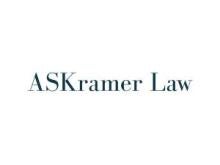Enterprise Risk Management is widely used in many industries and businesses. Risk managers use increasingly sophisticated approaches, methods, analytics, and frameworks to manage complex, interrelated, and interconnected risks. They employ a wide range of tools and controls to identify risks; anticipate them; and mitigate, minimize, or offset negative effects if these risks are realized. Internal finance, commercial, tax, and legal departments play increasingly strategic roles in ERM planning, alongside their ongoing involvement in oversight for related implementation, compliance, and reporting.
This Q&A with Andie addresses the tax considerations that businesses face when they use derivative contracts to hedge against price changes, interest rate fluctuations, and currency fluctuations. Business hedging transactions—deployed at the micro level to manage individual risks, or at the macro level to manage aggregate risks—provide businesses with essential protection against such fluctuations. The series is presented in five parts—Hedging Risks; Common Situations; Identification Requirements and Aggregate Hedges; Tax Timing; and Consolidated Groups—with focus on the challenges we encounter at the intersections between risk management, tax planning, and tax compliance.
In the United States, the statutory and regulatory definitions of a “hedge” for tax purposes are set out in Internal Revenue Code (Code) Sections 1221(a)(7) and 1221(b)(2), and in Treasury Regulation (Treas. Reg.) Section 1.1221-2. Business organizations generate ordinary gains and losses in the normal course of business, so business hedgers typically want to ensure that their risk management activities also generate ordinary income and loss. To receive this favorable tax treatment, tax hedges and the items they hedge must comply with the identification and tax reporting requirements set out in the Code and the Treasury Regulations.
How is a hedge defined for tax purposes?
A hedging transaction is defined as any transaction entered into by a taxpayer in the normal course of its trade or business, primarily to manage business risks of one of the following types:
- Price changes or currency fluctuations with respect to ordinary property that is held or to be held by the taxpayer
- Interest rate or price changes or currency fluctuations with respect to borrowings made or to be made, or ordinary obligations incurred or to be incurred, by the taxpayer
- Other risks that the Secretary of the Treasury prescribes in regulations
The taxpayer must identify the hedging transaction (hedge) as well as the asset or liability being hedged (hedged item).
Has the Treasury extended the definition of a qualified hedge beyond the definition at Code § 1221(b)(2)?
No. Although Congress authorized the Treasury to issue regulations to extend the hedging definition to transactions that manage risks beyond interest rate, price, and currency, the Treasury has not exercised its authority to do so.[1] The definition of a qualified hedge has not been extended.
What does it mean for a taxpayer to “manage risk” by entering into a hedging transaction?
The Treasury Regulations tell us that “whether a hedging transaction manages a taxpayer’s risk is determined based on all of the facts and circumstances surrounding the taxpayer’s business and the transaction.”[2] What does this mean?
The Treasury Regulations narrowly define “risk reduction transactions” as transactions “specifically described in the regulations or as otherwise determined by published guidance or by a private letter ruling.”[3] This regulatory limitation, however, is inconsistent with the legislative history that accompanied enactment of Code § 1221(a)(7). The 1999 Conference Committee Report said that “the ‘risk reduction’ standard of the [prior] regulations would be broadened to ‘risk management’ with respect to ordinary property held (or to be held) or certain liabilities incurred (or to be incurred).”[4] A related Senate Finance Committee Report also rejected the risk reduction standard, by saying that Congress believed that a risk management standard “better describes modern business hedging practices that should be accorded ordinary character treatment.”[5] Nevertheless, despite the language of Code § 1221(a)(7) and its accompanying legislative history, Treasury Regulations continue to refer to “risk reduction.” Thus, a taxpayer must proceed with caution in how it defines its hedging activities in determining whether its tax hedges “manage” its risks.
Do speculative transactions qualify as tax hedges?
No. Speculative transactions are not hedging transactions.[6] Hedges must manage price risk, interest rate risk, or currency fluctuations associated with the taxpayer’s ordinary property, obligations, or borrowings incurred (or to be incurred) in the normal course of its trade or business.[7] Transactions that are not entered into in the normal course of business, or which are not mitigating the specified business risks, are treated as “speculative” and are not tax hedges.[8] A taxpayer does not receive ordinary treatment on speculative transactions. Just as a taxpayer cannot rely on Code § 1221(a)(7) to treat transactions as hedges if the taxpayer fails to properly identify them, speculative transactions may be subject to the tax straddle rules at Code § 1092. When a taxpayer holds a tax straddle, tax losses are deferred while the taxpayer holds offsetting gain positions.
[1] Code § 1221(b)(2)(A)(iii).
[2] Treas. Reg. §1221-2(c)(4)(i).
[3] Treas. Reg. §§ 1.1221-2(c)(4)(ii) and (d)(1).
[4] Joint Committee on Taxation, Description of Modified Chairman’s Mark Relating to Expiring Tax Provisions (JCX-73-99), October 19, 1999.
[5] S. Rep. No. 106-201, Tax Relief Extension Act of 1999, 106th Congress, 1st Sess., at 24 (1999).
[6] Treas. Reg. § 1.1221-2(c)(4)(ii).
[7] Code § 1221(b)(2)(A). Ordinary property: “held or to be held”; borrowings: “made or to be made”; and ordinary obligations: “incurred or to be incurred.”
[8] Treas. Reg. § 1.1221-2(c)(4)(ii).




 />i
/>i
